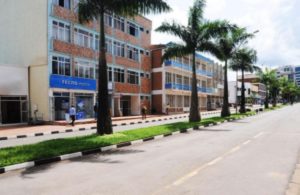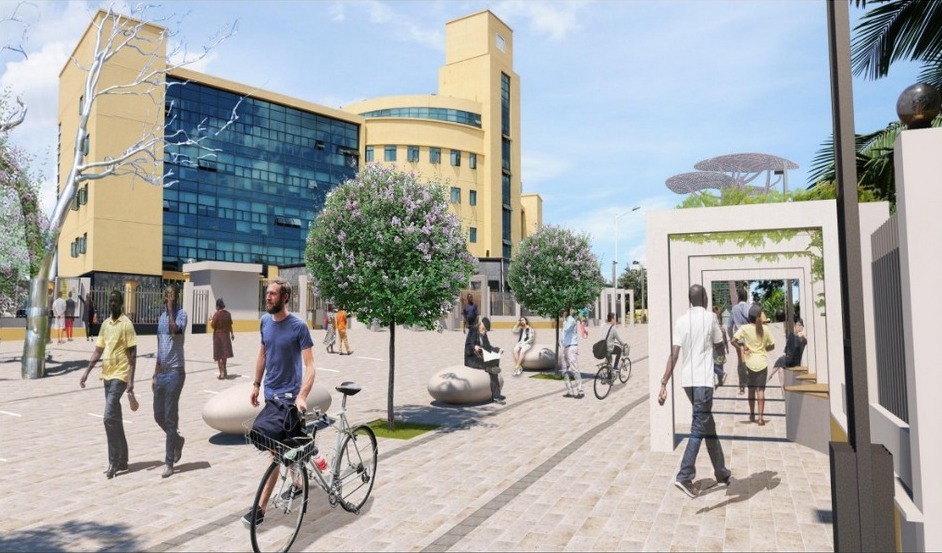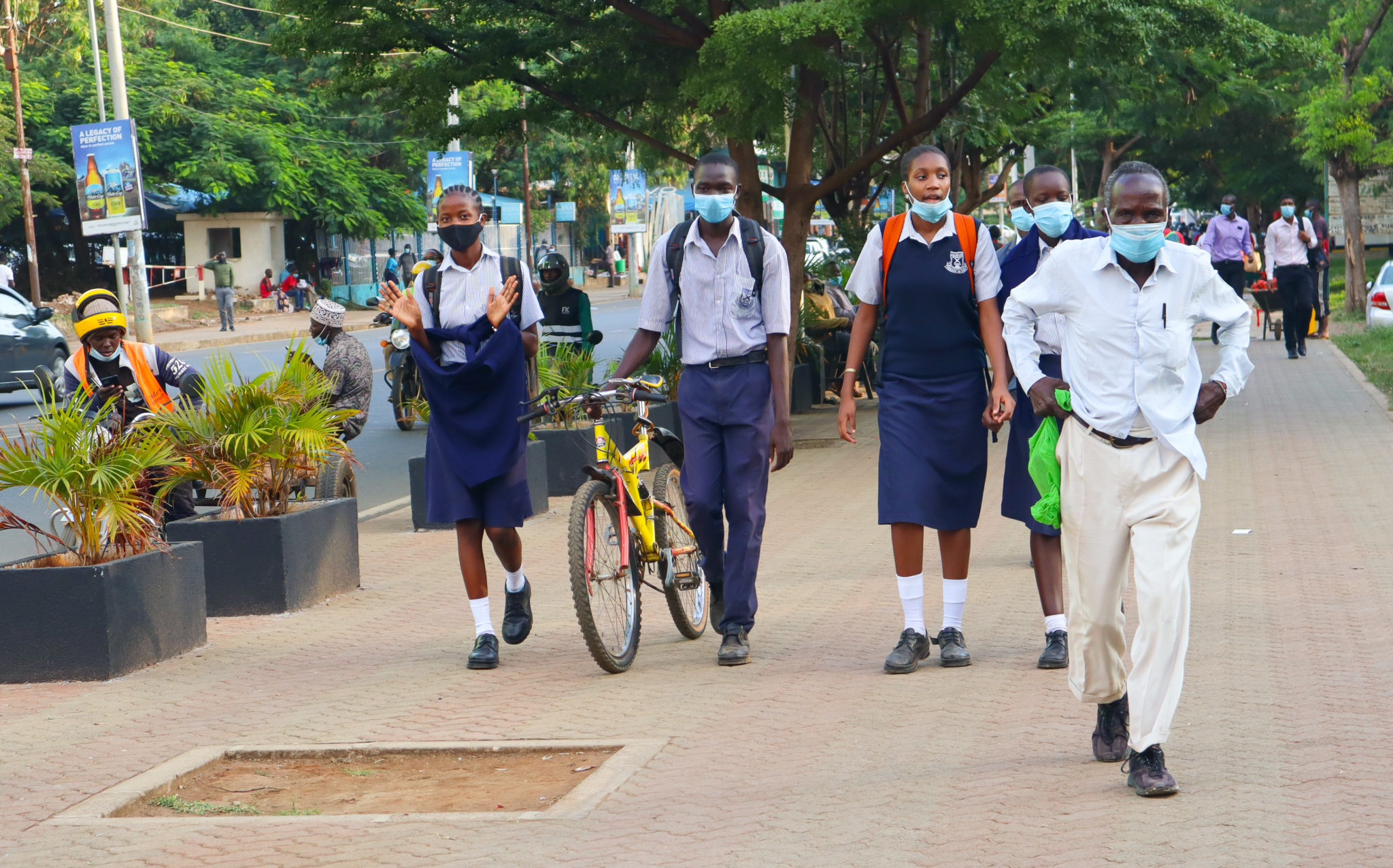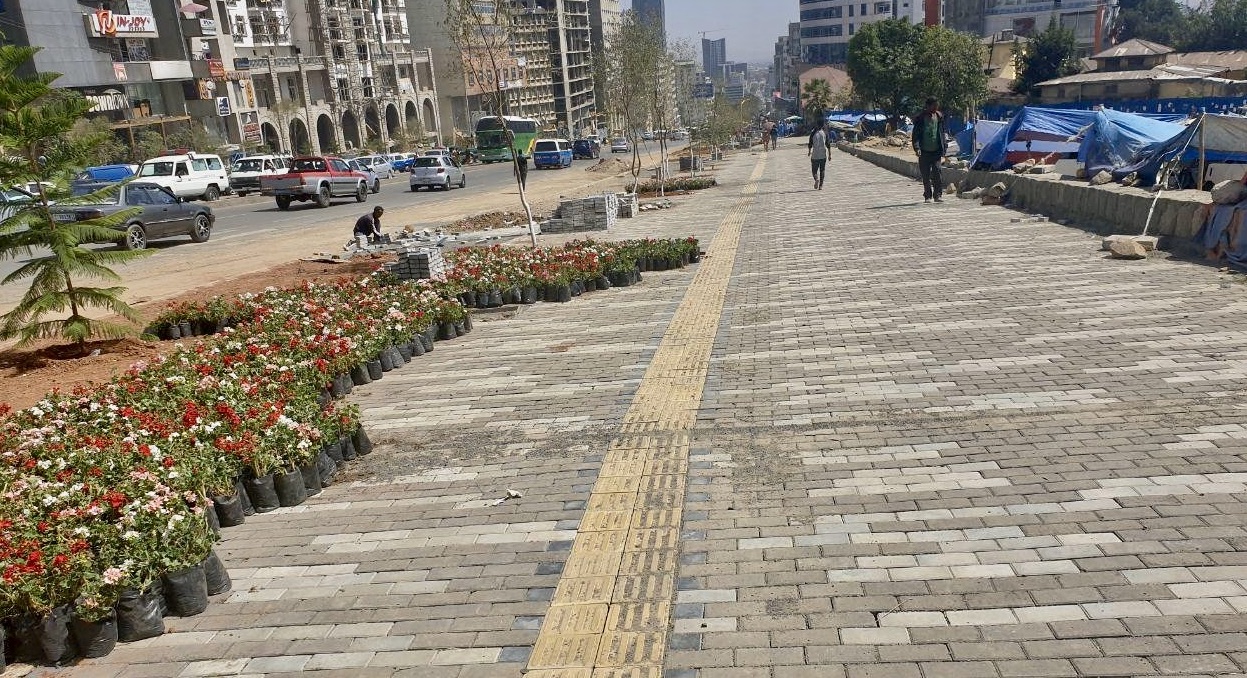
July 09, 2021
Sustainable cities: Shifting the paradigm in infrastructure investments in East Africa
In many African cities, decades of infrastructure investments have ignored non-motorised transport, despite walking being an essential mode of transport for the majority of residents. Over the years, as personal vehicle use has increased, the driving culture has continued to disregard the needs of pedestrians and cyclists. Rapid urbanisation coupled with a lack of adequate planning has also led to increased congestion. As a result, pedestrians are forced to walk on the carriageway while cyclists are forced to maneuver their way in and out of congested, high-speed streets. However, today, cities are realising that dedicated cycling and walking infrastructure is essential in promoting livable streets, sustainable transport and a safer, low-speed driving culture.
In Kigali, Rwanda, 52 percent of residents use non-motorised modes, 17 percent use public transport and 31 percent use personal vehicles. The City of Kigali, recognising that the provision of public spaces is key in transforming the city into a sustainable and equitable place for all, is upgrading the Imbuga City Walk within the central business district. An access point to key amenities such as city hall and the oldest market in Kigali, the avenue was converted to a car-free zone in 2015.

However, the area has experienced low foot traffic due to the presence of property fences. Upgrading the open space is expected to integrate environmental, social and economic benefits and increase the level of activity along Avenue 4, which is one of the key gateways into the city. The improvements are expected to improve both social and economic activity. Under the current project, the former roadway will be reconstructed for exclusive use by pedestrians and cyclists.
Works to improve the drainage system and replace the asphalt pavement with pavers and cobblestones have already started under the USD 4.5 million project. The 550 m corridor is expected to be a recreational and green area with benches, free Wi-Fi, landscaping, a city lounge and arcade area, kiosks, street lighting, a children’s playground, and an exhibition zone. To improve access, the car-free zone will include bikeshare stations at strategic points. Plans are underway to launch the bikeshare system with an initial fleet of 100 bicycles. Alternative routes will be provided for motorised traffic.
The City of Kigali is also working to ensure that surrounding land uses support a vibrant pedestrian environment along the Imbuga City Walk. The new Kigali Master Plan, launched in 2020, recommends the introduction of active frontages, a mix of uses, and compact development along BRT corridors. In addition, the pedestrianization will reintroduce vending kiosks to draw visitors to the zone.
To ensure equitable mobility, the City of Kisumu, recently launched the ambitious Kisumu Sustainable Mobility Plan with technical support from ITDP and UN-Habitat under the International Climate Initiative (IKI) Growing Smarter: Sustainable Mobility in East Africa project. The Plan focuses on public transport, walking, and cycling improvements as well as parking management. The 10-year roadmap acknowledges the gaps in current and upcoming infrastructure projects and offers safe, accessible, sustainable, and equitable alternatives.
From the household survey conducted to inform the Mobility Plan, over half of trips in Kisumu are by foot. The distribution of transport modes differs significantly between men and women, with women making significantly more walking trips and fewer trips by private motorised modes such as car and motorcycle. Peak hour pedestrian volumes exceed 2,000 pedestrians per hour on major streets in the city centre, while cycle volumes are well over 300 cycles per hour on some corridors.
The City of Kisumu has already begun implementing best practice designs that improve safety for pedestrians and cyclists in line with the Kisumu Sustainable Mobility Plan. Under the World Bank-financed Kenya Urban Support Program, the city launched the KES 241 million Kisumu Triangle project in the Central Business District, involving the reconstruction of 1.5 km of walkways along Oginga Odinga Street, Ang’awa Avenue, and Jomo Kenyatta Highway. The project included storm water drainage improvements, installation of utility ducts, installation of solar street lights, and construction of public toilets. Tabletop pedestrian crossings were constructed to provide safe, universally accessible crossing points for pedestrians.
Construction of the 8 km, KES 659 million second phase of the project is currently underway along Nyerere Road, Ondiek Highway, Gumbi Road, Mosque Road, Achieng’ Oneko Rd, Awuor Otieno Road, Omolo Ogar Road, Ang’awa Avenue, and Oginga Odinga Street. By improving walkability along these streets, the city will be able to encourage city residents to opt for non-motorised transport. Vulnerable groups including women, persons with disabilities, and school children will be able to experience safe pedestrian crossing
Guided by the Addis Ababa Non-Motorised Transport Strategy, Addis Ababa, Ethiopia, is improving walking and cycling infrastructure in the city to curb the growing use of personal vehicles. Walking and public transport are the dominant forms of mobility in Addis Ababa. Fifty-four percent percent of commuters walk, 31 percent use public transport, and 15 percent use personal vehicles. Despite high import taxes, the number of cars in the city is rapidly increasing, with 110,000 cars imported in 2016, a 50 percent increase over the level of imports during the previous two years. Many of the imported cars are used vehicles which increase congestion, noise, and air pollution.
The Non-Motorised Transport Strategy outlines a holistic set of measures to expand the use of non-motorised modes. Over the next ten years, the city plans to develop a citywide walking and cycling network that makes sustainable modes safe, convenient, and easy to use. Greater investment in non-motorised transport is expected to bring a number of benefits, particularly for low-income residents.
Merkato, the largest open-air market in Africa, covering 11.4 hectares and a vibrant, commercial, and transport hub in Addis Ababa, is one of these strategic areas. The city plans to improve the walkways and cycle tracks in the market, provide adequate bicycle parking, and ensure compliance with accessibility guidelines for people with disabilities. The city has also started improving pedestrian walkways and cycle lanes along the 2.3 km Churchill Avenue, within the city centre. The project, currently under construction, is funded by the Addis Ababa City Administration. Designs have also been initiated to pedestrianize the 1 km corridor from the Piazza area to Ras Mekonen bridge.




